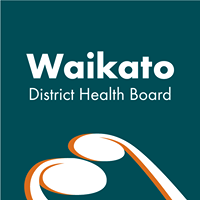11 September 2012
Access to the right care in a timely way in Ruapehu
Waikato District Health Board (DHB) has made a commitment to work with the Ruapehu District Council and primary care providers to meet the health needs of the 8500 people the DHB is responsible for in the district.
Chief operating officer Jan Adams says the provision of services in the northern Ruapehu district had to be more integrated.
“Integrated services mean primary and secondary being aligned to meet the needs of the community,” she said.
Primary health care relates to the professional health care received in the community, usually from a general practitioner (GP) or practice nurse. Primary health care covers a broad range of health and preventative services, including health education, counselling, disease prevention and screening.
A specialist or hospital usually provides secondary care on referral from a primary physician because it requires more specialised knowledge, skill or equipment.
“We need to give you seamless access and have the right people looking after you at the right time,” said Mrs Adams.
Taumarunui Hospital services the northern Ruapehu district – an area from National Park in the south to Ohura and Matiere in the north and Taumarunui itself.
Not only is the population an ageing one, but traditionally both primary and secondary health care providers struggle to attract health professionals to the district.
Taumarunui now has only 1.8 full time equivalent GPs. Health Waikato will work collaboratively with Kokiri Trust to try to attract more doctors to the area.
“We need to be supporting primary services and district nursing to keep people at home where possible with the right support mechanisms in place.”
Taumarunui Hospital's strength throughout the years has been its ability to reinvent itself as change goes on around it.
As the community has changed, forced by closures of Affco, New Zealand Rail, farming practice efficiencies, falling and ageing population, the hospital has responded.
Until recently Taumarunui Hospital had 17 inpatient beds with only a 50 per cent average occupancy over the year.
There are two rooms in the hospital, which can be put to better use. The first is a four-bedded room at the western end of the hospital overlooking the pool that lends itself well to being a palliative care room with ensuite facilities, sofa, television and potentially external decking etc.
This room would provide a far better environment for cancer sufferers than the traditional hospital setting and would allow more family involvement.
There are other rooms in the hospital that following feedback from hospital staff could be put to better use for a dedicated youth/child room with an ensuite.
A lot of work has gone into developing process flows and pathways for nurse-led assessments and this is still ongoing.
Rural and community services group manager Jill Dibble said the challenge was to start coming together, looking at communities’ needs and all local services working collaboratively.
Part of the problem for the DHB in Taumarunui was the ever-increasing number of presentations to the emergency department – up by 5000 in five years.
“This community is not that sick and they’re not that accident prone,” she said.
“What it shows is they can’t get to see their GP or health practitioner so seek assistance from the hospital emergency department.
“We need to make sure people get access to the right care in a timely way,” said Mrs Dibble.
Taumarunui Hospital service manager Joanne Knight says staff, many of whom have worked at the hospital for years, have been actively involved in discussions and their knowledge and experience of the community resulted in some innovative changes.
"I'm keen to ensure the community is well informed and briefed of what is going on so we will have an open door policy. We know how important the hospital is within the community so we will run guided tours to limited numbers later this month.”
About Waikato District Health Board and Health Waikato:
Waikato DHB is responsible for planning, funding and providing quality health and disability support services for the 372,865 people living in the Waikato DHB region. It has an annual turnover of $1.2 billion and employs more than 6000 people.
Health Waikato is the DHB’s main provider of hospital and health services with an annual budget of more than $701 million and 5238 staff. It has six groups across five hospital sites, three primary birthing units, two continuing care facilities and 20 community bases offering a comprehensive range of primary, secondary and tertiary health services.
A wide range of independent providers deliver other Waikato DHB-funded health services - including primary health, pharmacies and community laboratories.
ENDS



 NZEI Te Riu Roa: Mandated Single Approach To Reading Will Not Work
NZEI Te Riu Roa: Mandated Single Approach To Reading Will Not Work The Conversation: Could The School Phone Ban Work?
The Conversation: Could The School Phone Ban Work? Public Health Communication Centre: To Avoid A Measles Epidemic, Aotearoa Must Close The ‘Immunity Gap’
Public Health Communication Centre: To Avoid A Measles Epidemic, Aotearoa Must Close The ‘Immunity Gap’ Heritage New Zealand: Kid-friendly Archaeology Resource Kit Launched As Part Of Archaeology Week
Heritage New Zealand: Kid-friendly Archaeology Resource Kit Launched As Part Of Archaeology Week Tatai Aho Rau Core Education: Cyber Skills Programme For Tamariki Recognised At Māori Language Awards
Tatai Aho Rau Core Education: Cyber Skills Programme For Tamariki Recognised At Māori Language Awards Waitaha Kapa Haka: Waitaha-South Island Kapa Haka Celebrates 60th Anniversary
Waitaha Kapa Haka: Waitaha-South Island Kapa Haka Celebrates 60th Anniversary